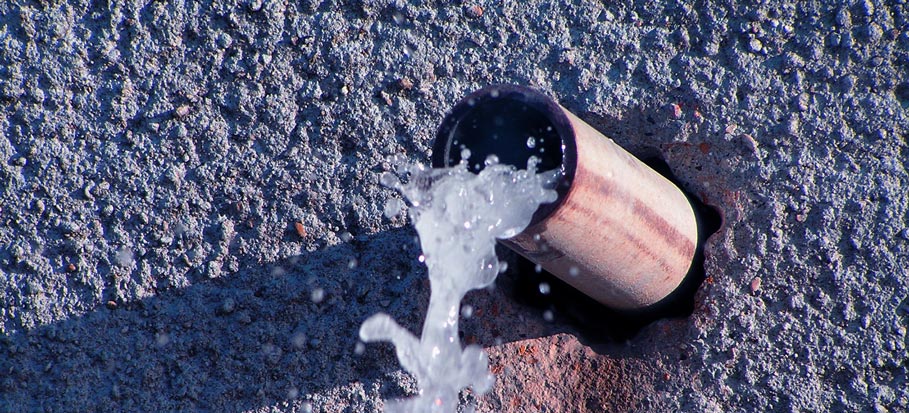What are your opinions about Detecting hidden plumbing leaks?

Early detection of dripping water lines can reduce a possible disaster. Besides saving you money, it will minimize the worry and irritation. The moment you discover a leakage, calling your plumber for repairs is the very best solution. Some small water leakages might not be visible. If you can not identify it with your nude eyes, below are some hacks that help.
1. Examine the Water Meter
Every home has a water meter. Inspecting it is a proven way that helps you find leaks. For starters, shut off all the water resources. Make certain no person will certainly flush, utilize the faucet, shower, run the washing maker or dish washer. From there, most likely to the meter and also watch if it will certainly transform. Because nobody is using it, there ought to be no motions. If it moves, that suggests a fast-moving leak. Furthermore, if you identify no changes, wait a hr or 2 and also examine back once more. This suggests you might have a sluggish leakage that might also be underground.
2. Examine Water Intake
Examine your water expenses as well as track your water intake. As the one paying it, you should see if there are any kind of inconsistencies. If you find sudden changes, despite your intake coinciding, it means that you have leakages in your plumbing system. Remember, your water bill ought to fall under the very same array every month. An abrupt spike in your costs suggests a fast-moving leakage.
A steady rise every month, also with the same behaviors, shows you have a slow-moving leak that's additionally slowly rising. Call a plumber to thoroughly check your residential or commercial property, especially if you feel a warm area on your flooring with piping below.
3. Do a Food Coloring Examination
When it comes to water intake, 30% comes from toilets. If the color in some way infiltrates your dish during that time without flushing, there's a leak between the tank as well as dish.
4. Asses Outside Lines
Don't forget to inspect your exterior water lines too. Examination faucets by attaching a yard hose. Must water permeate out of the connection, you have a loose rubber gasket. Change this and also ensure all connections are tight. If you've got a lawn sprinkler, it will certainly aid get it professionally analyzed as well as maintained yearly. One little leakage can waste tons of water and spike your water bill.
5. Evaluate the scenario as well as check
Home owners need to make it a behavior to inspect under the sink counters and also inside cupboards for any type of bad odor or mold growth. These two warnings suggest a leakage so prompt interest is called for. Doing routine assessments, also bi-annually, can save you from a major problem.
Check for stainings as well as compromising as most devices as well as pipes have a life expectations. If you presume leaking water lines in your plumbing system, don't wait for it to escalate.
Early discovery of leaking water lines can minimize a prospective disaster. Some tiny water leakages may not be noticeable. Examining it is a guaranteed means that assists you uncover leaks. One small leak can throw away heaps of water and increase your water bill.
If you presume dripping water lines in your plumbing system, don't wait for it to rise.
How to Know If Your Home Has a Hidden Leak
Water Meter Reveals Inexplicable Water Usage
If you’d like to test whether or not there’s a leak somewhere in your home, you can do this using your water meter. Here is how to conduct the test:
Don’t use any water in your home for at least 30 minutes; this also means not turning on faucets or water-using appliances.
Go outside, and check your water meter for activity.
If your water meter shows that there was activity, even though no one was using any water, this proves that there is a leak in your home.
Visible Mold or Mildew Growth
Leaks behind walls create moist, dark environments that allow mold and mildew to grow and thrive. Eventually, you might see mold growth forming on the wall closest to a hidden leak.
If mold is growing in an area that receives a high amount of moisture, such as a bathroom, it may simply be an indication that better ventilation is needed. However, if you see mold growth on a wall or the ceiling in an area where you would not expect, you probably have a hidden leak.
Musty, Mildew Odor
Sometimes you might not be able to see the mold or mildew that is growing as a result of a leak. However, the smell can give the problem away just as easily. If you catch a whiff of something musty, there’s a good chance that old water is collecting somewhere in your home that you can’t see.
Stained/Warped Walls, Ceilings, or Floors
When your home soaks up water, a variety of red flags can become visible, including ceiling stains, bubbling drywall, warped walls, and sagging floors. While these issues can be caused by excess humidity, they can also be signs that a pipe or plumbing connection has started leaking behind your walls.
Inexplicably High Water Bill
After a while, you get a general sense for what your water bill should be. If you own a pool or sprinkler system, your bill will tend to be higher during summer. However, if you receive a water bill that seems especially high, and you can’t figure out what caused it, then you may have a hidden leak somewhere that’s increasing your bill.
https://www.plumbingjoint.com/blog/2019/july/how-to-know-if-your-home-has-a-hidden-leak/

I stumbled upon that review on Finding hidden leaks when doing research the internet. Remember to take the opportunity to promote this blog post if you enjoyed reading it. I love reading our article about Top leak detection hacks.
Leak-free future? Call.
Comments on “Finding Concealed Water Line Leaks: 6 Clever Hacks”